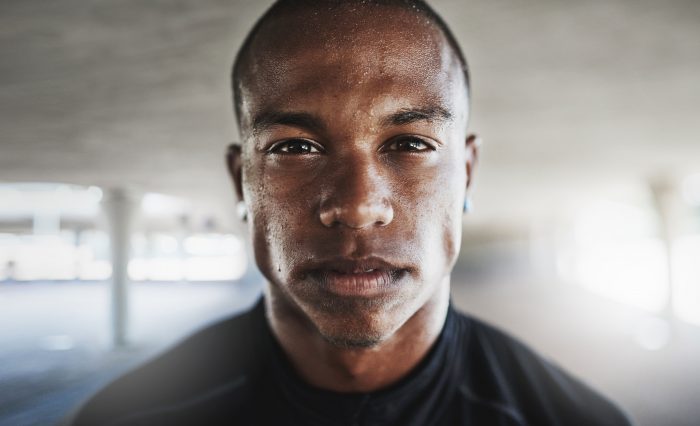
Pursuing Meaningful Goals
There’s something undeniably symbolic about watching the clock as it counts down the final seconds to midnight on New Years’ Eve. The promise of a fresh year is like a clean slate; it’s an opportunity to dream big and set up the systems and strategies required to get you on course for the next 12 months. It’s also the time of year where we’re most likely to set goals, only to have them fall off the radar shortly after.
It seems almost unfair when you consider how easy it is to fill a page with lofty goals, yet how hard it is to achieve them. Why is this the case?
In his review article The Neuroscience of Goals and Behavior Change, researcher Elliot Berkman, PhD, explains it in this way:
“Goals are usually things we want but have difficulty achieving even when we know they are achievable. Otherwise, we wouldn’t need a goal in the first place… To pursue what most people call a goal involves doing something different than what has been done before.”
Simply setting a goal won’t create new behavior
Behavior change is a complex process that requires the alignment of a combination of motivational and cognitive factors. Do you have the ability to stay focused on only what is relevant to your goal? Can you suppress any behaviors that will stop you from achieving what’s important? And just how important is the achievement of your goal anyway?
If you’re working towards a goal in Animal Flow such as a stable Tuck Balance or an effortless Pop Out, that’s known as Complex-Novel behavior because it requires high degrees of both skill and motivation. Goals that are associated with this behavior are typically the most challenging and important of all.
Moving from intention to action
It can feel challenging to transform your best intentions into the behaviors that are required in order to achieve your goals. This inability to take action is known as the ‘intention-behavior gap’. One way to close this gap is to have a clear understanding of how the behavior you want to adopt can easily fit into, and positively impact, your world.
So when it comes to putting in the practice time for your Animal Flow goal, ask yourself: “Where can it most easily fit in my life and how will it benefit me?”
Will it enable you to further serve or inspire the people around you?
Will it mean that you’ve improved the function of your body in some way, creating freedom for you to do other activities that have meaning to you?
Or will it prove to you that you can follow through on something that you put your mind to?

Focus on the outcome, plan for the obstacle
You’ve set the goal and you’re clear on the behavior you want to adopt, but there’s another component that will help set you up for success: planning for failure.
Professor of Psychology at New York University and the University of Hamburg, Gabriele Oettingen, encourages anyone with a goal to use an intervention strategy that considers the contrast between the positives of goal attainment and the negatives of obstacles you may encounter.
Her WOOP (Wish, Outcome, Obstacle, Plan) model helps to automatize behavior change by planning for things to go wrong. WOOP is based on the concept of mental contrasting, where you contemplate the difference between your desired future (such as a consistent Tuck Balance) with the primary obstacle of your current situation (such as work commitments getting in the way of your practice).
WOOP your goal into shape
Step 1: WISH
Set a goal that is important to you but also realistically attainable. For instance, it’s highly unlikely that you’ll be able to hit the perfect 60 second Tuck Balance in only a week so assess where you’re at and use it as a guide to setting your wish.
E.g. I want to hold a 10 second Tuck Balance in 3 months.
Step 2: OUTCOME
Identify what it will mean to you once you have achieved your wish. Get clear on it and then write it down, visualize it, tell a loved one–whatever helps you clearly position the outcome at the front of your mind.
E.g. I will feel accomplished as I will have achieved something that I’ve wanted to do for a long time. I’ll also be able to help my clients who are on their own Tuck Balance journey. I’ll be able to take my Level 2 Test Out and then take the Level 3 workshop.
Step 3: OBSTACLE
Change directions by identifying the main obstacle within you that could get in your way. Get specific. For instance, instead of writing ‘Lack of time,’ dig into how you choose to spend your time that could be impacting your goal.
E.g. I may choose to stay up later than is ideal at night, scrolling on social media and watching Netflix. This causes me to snooze my alarm the next morning and I miss my training time because I then have to get on with my day.
Step 4: PLAN
Make a clear plan that confirms exactly what you’ll do if the obstacle occurs or to prevent it from derailing you.
E.g. I’ll set an alarm for 8.45pm each night to remind me that it’s time to turn all devices off and get ready to go to sleep. I’ll also leave my phone on the other side of the room so I have to get out of bed to turn off the alarm in the morning.
Finally, summarize your WOOP into short and simple statements that can be easily repeated.
WISH: 10 second Tuck Balance
OUTCOME: Progressing and feeling accomplished
OBSTACLE: Not going to bed on time, snoozing in the morning
PLAN: If I don’t go to bed on time or I snooze my alarm then I’ll have a hard stop on device time and also keep my phone out of reach.
Revisiting and refreshing your goals regularly helps to ensure that you’re moving towards meaningful improvement in the areas of your life that matter most to you. You don’t have to be a fan of New Years’ resolutions to put the WOOP model to use, and you certainly don’t need to wait for January 1st to start pursuing your dreams. So go ahead, make a wish.
Do you have a Flow goal? Share it with us on Instagram @animalflowofficial and use the hashtag #AnimalFlowGoals whenever you post updates so that others can follow you and be inspired by your journey.
